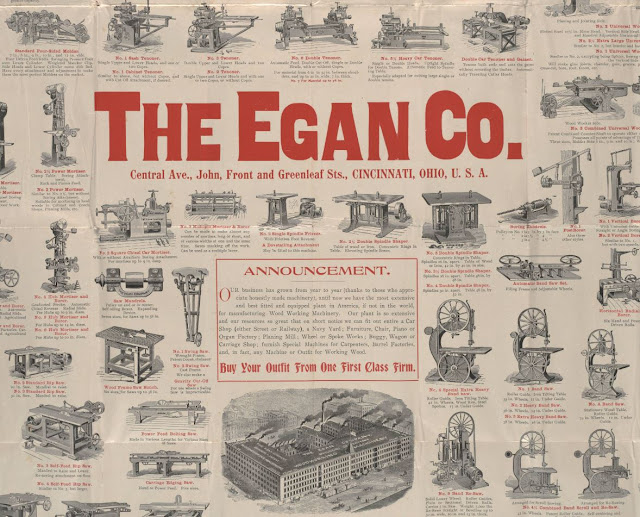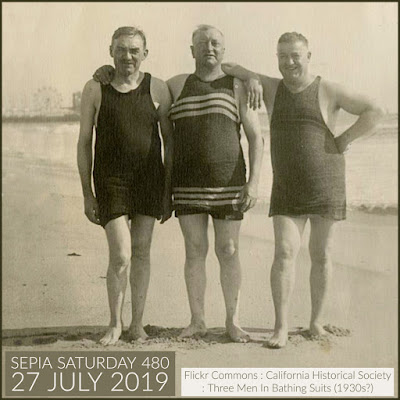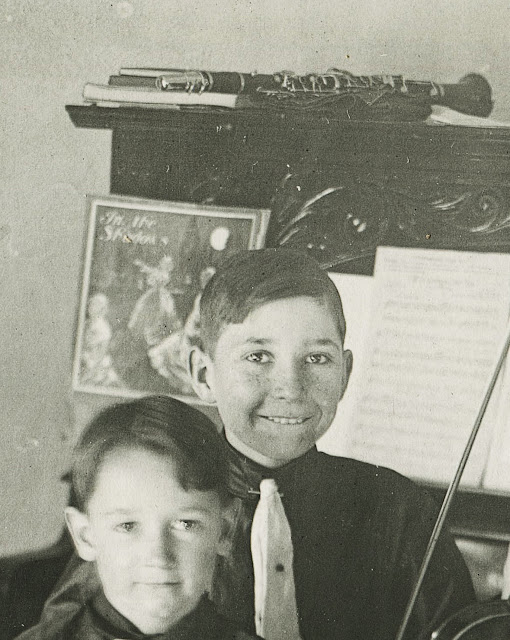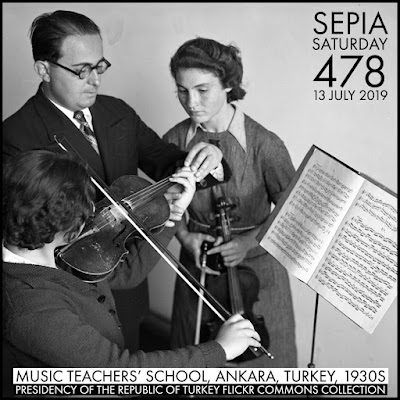What is the price of fame?
We know it takes hard work,
requires willpower and perseverance.
But what is the personal cost of winning celebrity?
Lost time? Divided family?
Broken friendships? Failed love?
This is a story about that struggle
between ambition and desire.
In 1904 a newspaper headline set the scene.
The Long Distance
'Phone Romance
of the Millionaire's
Daughter and the
Italian Band Master
An Atlantic City Love Story
***
We know it takes hard work,
requires willpower and perseverance.
But what is the personal cost of winning celebrity?
Lost time? Divided family?
Broken friendships? Failed love?
This is a story about that struggle
between ambition and desire.
In 1904 a newspaper headline set the scene.
The Long Distance
'Phone Romance
of the Millionaire's
Daughter and the
Italian Band Master
An Atlantic City Love Story
 |
| Buffalo NY Sunday Morning News 21 February 1904 |
***
Longtime readers of this blog may remember one of the two principal characters in this love story whose postcard featured in my post from May 2018. He was Oreste Vessella, the charismatic bandleader of an Italian Band that performed at the Steel Pier in Atlantic City, New Jersey, America's premier recreation resort in the 1900s. Though most people came for the sun, sand and surf, many enjoyed the musical culture provided by concerts at the Steel Pier.

In 1904 Oreste Vessella was a recent immigrant having arrived in America in July 1901 at age 24. A native of Alife, a small town in the Campania region of Italy, Oreste received his first musical training as a clarinetist at the Naples Conservatory and then went on to study composition in Genoa. His uncle was Alessandro Vessella (1860–1929), a noted band director and composer in Rome. His father and brothers were also skilled musicians, and Marco Vessella, the youngest brother, later became a popular band director at a Pacific coast resort in Long Beach, California. (See my post from July 2015, Music on the Beach)
 |
| Allentown PA Morning Call 04 October 1902 |
Oreste's father, Crescenzo Vessella, was already living in Little Italy in Manhattan, New York when Oreste arrived in America, likely traveling with other musicians of the so-called Royal Italian Band of Rome. Whether he was the bandleader at that time, or just another clarinet is not clear, but by 1902 the 50 piece band promoted him as its new star conductor.
In 1903, Oreste secured an engagement for his Royal Italian Band of Rome, at the Steel Pier in Atlantic City. It was the start of a long relationship that would continue for nearly 25 years. The pier opened in 1898 as a 1,650 ft long amusement park attached to Atlantic City's famous boardwalk. Combined with the many grand hotels along the boardwalk, the Steel Pier became an entertainment center for the many national conventions attracted to Atlantic City in the summer months. A covered section of the pier served as a stage area for concerts by bands and orchestras. Vessella's band would typically play 3 times every day during the summer season.
_ _ _

This postcard shows how the Steel Pier appeared in 1911. The two story section at the entrance contained a casino and a music hall which could seat 1,200 patrons. Further along was a dancing pavilion with room for 3,500 and another at the end which could accommodate 4,500. On one occasion during its first season over 18,000 people were admitted to the pier.
7/27/'11
Here for the day
with the crowd
Lots of fun. Saw
somebody this morn-
ing, you know.
G.H.
Here for the day
with the crowd
Lots of fun. Saw
somebody this morn-
ing, you know.
G.H.
As amusement resorts flourished in the 1900s, so did the postal service with the advent of picture postcards. Seaside amusement parks sold thousands of postcards every day, and a picture of a animated Italian band conductor made for a flashy message to send back to the folks at home.
This image of Oreste Vessella,
with his arms raised dramatically in musical command,
was never posted, but was marked on the back in ink:
Atlantic City, N. J.
July 1st. 1905
with his arms raised dramatically in musical command,
was never posted, but was marked on the back in ink:
Atlantic City, N. J.
July 1st. 1905
Oreste's autograph on the front is printed.
***
The second character of this love story was Miss Edna Egan. Born in Ohio in July 1885, she was one of the seven children, three sons and four daughters, of Thomas P. and Alma E. Egan of Cincinnati. Mr. Egan was a "captain of industry" and a "multi-millionaire." In the summer of 1903, shortly after Edna's 18th birthday, the Egan family, rather than going abroad to the "fjords of Norway or the lakes of Switzerland," took their holiday in Atlantic City. Of course that summer the talk on the Boardwalk was about the handsome dark-eyed Italian band master, Oreste Vessella. So Edna went to his concert.
 |
| Buffalo NY Sunday Morning News 21 February 1904 |
The music was nice enough, "the Earl King", the march from "Tannhauser", but then the band played "Violets", Edna's favorite song. Suddenly emboldened she sent a note to the dashing conductor asking if he would repeat "Violets". Looking into the audience, Oreste spotted the tall, beautiful young woman in the first row, so of course it was encored. And over the following days repeated again and again. It did not take long before a mutual friend arranged an introduction. Charm led to infatuation led to desire. By the end of the summer, Oreste's heart was hooked. But a marriage proposal is a kind of business contract and Oreste needed to negotiate one final hurdle. Edna's father.
 |
| Thomas P. Egan Source: American Carpenter and Builder, 1910 |
Edna's father was Thomas P. Egan (1847–1922), president of The Egan Co. in Cincinnati, Ohio. Born in Ireland, T. P. Egan started work in Cincinnati at a machine shop where he suffered an accident and lost an arm. This misfortune proved most fortunate in that it moved him off the workshop floor and into the accounting and sales office. In 1874 he started his own company that manufactured every kind of woodworking machinery — wood lathes, band saws, table saws, mortisers, molders, jointers, and planers. All belt-driven and made of cast iron, these were the machines that other companies used in their factories to make wood flooring, doors, windows, chairs, cabinets, wheels, wagons, etc.
These machines also made Mr. T. P. Egan a very, very wealthy man.
At Christmas in 1903 it was reported that he presented a gift of $15,000 to each of his seven children. Though only stocks and bonds that probably didn't need much wrapping paper, undoubtedly the presents were much appreciated.
 |
| Topeka KS State Journal 26 December 1903 |
Mr. Egan insisted that before he could accept this brash Italian into the family, Oreste would have to come to Cincinnati. So at the end of the season, Oreste ventured west to Ohio to secure his inamorata. His visit was successful and in February 1904 Edna and Oreste announced their engagement. But rather than place a simple paragraph in the society section, a full page article appeared in national newspapers in Boston and Buffalo to tell the story of of their fairy tale courtship.
The "Long Distance 'Phone Romance" refereed to in the story's headline was the latest trend in communication, the long distant telephone call. Every day at 4 o'clock Edna would place a call Atlantic City. Even if in the middle of a concert, Oreste would look at his watch, quickly pass the baton to his assistant, and then run to the 'phone. With his limited English and the numerous details of the wedding plans, their conversation could go on for some time. With telephone charges at $2.75 for three minutes, this pursuit of love was deemed a charming but extravagant expense.
 |
| Buffalo NY Sunday Morning News 21 February 1904 |
But it all came to good and on Wednesday, May 4, 1904 Oreste and Edna were married in a private ceremony held at the Egan home in Cincinnati. The next day the happy couple took the train to Atlantic City where Oreste's band greeted them at the station with a serenade.
 |
| Cincinnati Enquirer 06 May 1904 |
***
Over the next few months, there were reports about Signor and Signora Vessella's new married life taking a residence at an Atlantic City hotel. Edna was becoming an "object of attention" with her fashion style. They were planning a trip to Italy in the autumn. Her brother sailed for Honolulu in July. One sister and brother-in-law were in Sweden and another were leaving for South America. Her parents and youngest siblings were expected to spend a few weeks in Atlantic City. It was the typical news of high society affairs.
But then in October a dark cloud appeared in a Cincinnati newspaper.
Loves Bride, But Devotes Time to Music
Honeymoon of Signor Vessella and Cincinnati Bride
was Spoiled by Idle Gossip at Atlantic City
where the Groom is Bandmaster.
Honeymoon of Signor Vessella and Cincinnati Bride
was Spoiled by Idle Gossip at Atlantic City
where the Groom is Bandmaster.
 |
| Cincinnati Post 07 October 1904 |
"Crazy in the head," Signor Vessella declared the gossips to be who said there was trouble between him and his young wife. "But these people, they talk so much about me and my wife," exclaimed the bandmaster in amazement. "I love my wife. I love her dearly and she loves me. So many say we have not been happy. But it is all lies."
Oreste produced correspondence from his wife to show the reporter proof of his wife's tender affections. While apart they wrote each day and he felt this evidence would silence gossipy tongues. (There was no mention of any expensive 'phone calls which perhaps was a demonstration of restraint on their new marital economy.)
Edna's father was given the last word. "I saw my daughter and son-in-law much of the summer, and they get along about as well as anybody," said Col. Egan to The Post. "i was not able to learn what it is claimed gossips are saying. It takes young people who haven't known each other long some time get it pulling smooth together. I do not believe they are having any harder time than other young couples. After I left Atlantic City I think my daughter was somewhat homesick."
("Col." was an honorific of public prestige used in this era by gentlemen who did necessarily have any military experience.)
But then the dark cloud opened up into a storm.
 |
| Kansas City MO Star 10 October 1904 |
She Sued A Married Man.
A Breach of Promise Action Against Oreste Vessella, the Bandmaster.
On October 8, 1904 a lawsuit was filed in a New Jersey court against Oreste for Breach of Promise. The complainant was a 24 year old Italian woman, Gaetanina Lombari, (often misspelled in reports) who alleged that before Oreste immigrated to the United States, he had sought to marry her back in Italy. She claimed that Vessella had trouble getting consent from his parents, but that nonetheless in November 1899 she and Oreste eloped.
When he ran out of money, he wrote to her parents begging their pardon, but they filed suit in an Italian court where the judgement went against Vessella. The penalty was eighteen months' imprisonment which was appealed. Signorina Lombari, (sometimes spelt Lombardi) had traveled to New York in an effort to gain justice in American courts.
She sought damages of $25,000.
_ _ _
The announcement set off sensational reports, not all of them complete or correct. Was there any truth to the story? Supposedly in 1898 Oreste had borrowed 2000 lire from his prospective Italian father-in-law as an advance on a 3000 lire dowry promised by the girl's mother. Lombari's lawyer had a letter from Oreste that asked her to join him in America, even suggesting she borrow $500 for a second-class ticket on a steamer as travel in steerage would look badly as his promised bride.
The Egans responded with reports that tried to counter this disruption to the young couple's marital harmony. Edna remained at her parent's home, away from the spotlight of attention at Atlantic City, as Oreste wrapped up his band's concert season and hurried west to Cincinnati. Mr. Egan expressed confidence in his son-in-law and said the lawsuit did not surprise them in the least as they had already discussed it with Vessella that summer. Concerning the suit he would not say much. "My son-in-law is able to take care of himself, I presume," he said. "I note that there are no specific charges, and, calculating from the dates and the Signor's present age, there is an apparent discrepancy in the girl's story. Besides, if Signor Vessella is sued for $25,000 and has no money other than what he earns, where is the good in suing? You may state positively that he has none of my money."
When asked if Oreste would be a guest at his home, Egan replied, "I have invited him, and I presume he will accept. When I invite a gentleman I think I am able to properly entertain him. Signor Vessella's private affairs are no concern to me. My daughter assures me of her absolute faith in him. The story of any estrangement between them is idle. We have reiterated that more than once. Neither is the statement true that I gave my daughter a present of $100,000. I did divide a certain amount of money among seven, and she was one of them.
"Personally, I think the whole difficulty is the result of a crowd of jealous people to whom Signor Vessella is a matinee idol. You know how foolish these worshipers act even here, and that gives you an idea of what they are in Atlantic City."
But that week Oreste stayed at a hotel in Cincinnati and not at the Egan home. The breach of promise case would be assigned to the New Jersey court's spring term in 1905.
Meanwhile newspapers as far away as Portland, Oregon made sport on the scandal.
 |
| Portland Oregon Journal 03 March 1905 |
No More Flirting For Musicians In Jersey
Atlantic City, N. J., March 3 – A new rule is in force on the steel pier which forbids gayly-uniformed musicians of the royal marine band from flirting with impressionable young women who visit the pier. Wealthy papas of marriageable daughters need have no further fears.
Since the capture of the affectons of Miss Maud Eagan (sic), daughter of a Cincinnati millionaire, by Oreste Vessella, the leader of the band, the discipline of the organization has been seriously affected, the men neglecting practice, while they carry on flirtations. An instant discharge will follow any infraction of the new edict.
_ _ _
***
 |
| Wilmington DE Evening Journal 14 April 1905 |
Vessella Must Pay $10,000
Atlantic City Bandmaster Loses Breach of Promise Suit
In mid-April 1905 a jury, after 30 minutes deliberation, awarded Gaetanina Lombari $10,000 damages from Oreste Vessella for breach of promise. Vesslla was in court when the decision was announced but Lombari had left just as the case was given over to the jury.Her attorneys were jubilant.
During testimony, Vessella admitted he had been convicted in Italy on account of his relations with the girl. A letter written in June 1902, blazed with his love for his Italian sweetheart and repeatedly told of his desire to marry the girl, closing with unwavering love and thousands of kisses.
One hearing that Signorina Lombari had won, Vessella smiled broadly.
_ _ _
One newspaper in Maysville, KY took the wire report on Vessella's lawsuit and assigned it to their most creative writer as if the salacious story needed more spice.
 |
| Maysville KY Public Ledger 18 April 1905 |
Not-A-Count von Orestes Vessella, a cat-gut scraper from Italy, was obliged to leave that land of leisure and love because he wrote 300 letters and sent several million kisses to Miss Gaetinona Lombardi–and then refused to send for the Parson. Since he came to Uncle Sam he has managed a band at Atlantic City and married a Miss Egan, whose father is a rich man in Cincinnati. But his deserted Italian sweetheart followed him, and a New Jersey Jury has just given her a judgment against the No-a-Count for $10,000 in a breach of promise suit. Like many another fool American girl, Miss Egan appears to have married a bunch of hair and trouble.
_ _ _
Meanwhile other more generous newspapers published a large photo of Edna (Egan) Vessella on her first wedding anniversary, looking sad and posed seated in front of a weirdly pulsating op art design.
 |
| Owensboro KY Messenger 07 May 1905 |
Mrs. Oreste Vessella
Mrs. Vessella, who recently married a talented young Italian musician, is a pretty Cincinnati girl. Before her marriage she was Miss Egan, and her father is a prominent Ohio manufacturer. Mrs. Vessella has fair hair and blue eyes and is a very attractive woman.
Oreste appealed his breach of promise case to the New Jersey supreme court, but in November 1905 it upheld the lower court's decision. The Cincinnati Post ran a report with this headline:
Papa Egan Will Not Pay Damages
Bandmaster Vessella Must Raise Money
for Heart Balm or Go to Jail
Bandmaster Vessella Must Raise Money
for Heart Balm or Go to Jail
 |
| Cincinnati Post 15 November 1905 |
When father-in-law Egan was questioned for his reaction to the judgment he said, "It's now up to Oreste to either languish in jail or declare himself bankrupt." When the reporter asked if he wished to see his son-in-law in jail, Egan replied, "I really haven't anything to do with it. I don't intend to pay a cent. It isn't my case, anyhow. And I wouldn't pay money of that kind, anyhow. Vessella was only 16 years old at the time this affair took place, and now nine years later this Lombardi woman comes along and says she was engaged to him. almost any man in the country could be held up in similar fashion. I don't intend to pay anything–not much."
It doesn't take much to read between the lines.
Thomas P. Egan was not pleased with this predicament
that his Italian son-in-law had brought on
to his daughter and the Egan family.
Thomas P. Egan was not pleased with this predicament
that his Italian son-in-law had brought on
to his daughter and the Egan family.
It would seem Edna and Oreste's marriage was on the rocks.
But maybe all was not lost.
But maybe all was not lost.
In May 22, 1906
an article appeared
on page 9 of the Cincinnati Post,
jammed into the corner by a report on
the city council's political infighting
over street repair and garbage collection,
and an account of terrible atrocities committed
by U. S. soldiers in the Philippines.
It was just two weeks after
the Vessellas' second wedding anniversary,
and there was a photo of Edna smiling
below this headline.
an article appeared
on page 9 of the Cincinnati Post,
jammed into the corner by a report on
the city council's political infighting
over street repair and garbage collection,
and an account of terrible atrocities committed
by U. S. soldiers in the Philippines.
It was just two weeks after
the Vessellas' second wedding anniversary,
and there was a photo of Edna smiling
below this headline.
“Musicians Make
Ideal Husbands”
–Mrs. Vessella
Ideal Husbands”
–Mrs. Vessella
Wife of Bandmaster Says
She is Infatuated With
Husband, Despite His Irregular Habits.
She is Infatuated With
Husband, Despite His Irregular Habits.
 |
| Cincinnati Post 22 May 1906 |
So what is the price of fame?
Readers will have to return next weekend
for that answer and more in
An Atlantic City Love Story,
part 2
Readers will have to return next weekend
for that answer and more in
An Atlantic City Love Story,
part 2
CODA
I'm not absolutely certain but I believe that Edna's favorite music was a song entitled The Message Of The Violet, from the operetta "The Prince Of Pilsen" with music composed by Gustav Luders and lyrics by Frank Pixley. First performed in Boston in May 1902 and then with much success on Broadway in March 1903, the plot involves a case of mistaken identity. The lead is Hans Wagner, a widowed brewer and alderman from Cincinnati, who travels to Nice, France with his daughter, Nellie, in order to visit his son, Tom, who serves in the U. S. Navy. Upon his arrival, the Cincinnati brewmaster, is mistaken for the Prince of Pilsen, Carl Otto. Hilarity, confusion, and romance follow.
The song has words, of course,
but in 1903 John Philip Sousa's Band made a recording
of a band arrangement with the melody played
by the great trombonist Arthur Pryor.
Pryor performed many times
in New Jersey's early recording studios
as both a musician and band leader,
and surely was acquainted with Oreste Vessella
who also made recordings in New Jersey
with his Royal Italian Band.
***
***
 |
| In the Summer at the Gay Seashore, 1913 words by Herbert Thomson music by Oreste Vesella Source: The Lester S. Levy Sheet Music Collection |
This is my contribution to Sepia Saturday
where it's never too hot for a good photo.
where it's never too hot for a good photo.











































